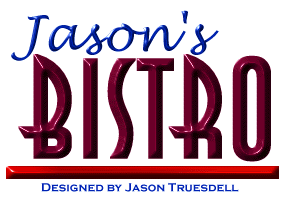

| Cuisine | German |
| Description | German cuisine should be noted for fantastic
baked goods. Heavy, rich foods and various preserved foods (pickled
cabbage, sausage, etc.) are typical of "burgerlich" (bourgeois)
cuisine, which wealthier homes have historically eaten.
Butter and rich foods such as cheese and sour cream are used to flavor dishes more than herbs and spices, but one of the classic accompaniments to home fries (Bratkartoffel) is Grüne Soße, which is made with a hefty quantity of fresh green herbs. Onions, leeks and garlic are also used frequently, but are sometimes viewed with skepticism by older people. |
| Vegetarian Appeal | Germany has perfected the art of bread.
Austrian and German pastries, tortes, and cheesecakes are also dangerous
potential addictions. Germany, Austria, Switzerland and Holland all
produce great cheeses which are often used in German cooking.
Contemporary German cuisine emphasizes fresh ingredients and tends to be lighter than the classic bourgeois fare. Like many countries, the modern inventions frequently attempt to fuse ingredients or techniques from countries whose ingredients have increasingly become available. Vegetarian cuisine is increasingly popular, although the types |
| Basic Ingredients |
Your pantry/refrigerator should feature:
Other frequently used ingredients include:
|
| Unusual ingredients |
American and German food have some common heritage, so many ingredients
are available in the US.
|
| A Typical Meal | Germans have very different eating habits from
one another, but some patterns are typical.
For breakfast, some fresh rolls or fresh bread can be served with butter and cheese or jam. Nutella, a hazelnut-chocolate spread, is also popular. Yogurt, granola-like "Muesli", and fresh fruit may also be found at the morning table. Northern Germans might wake up with a cup of East Frisian tea; coffee and tea are not uncommon. A small sandwich or some other snack might be eaten around 10:30 in the morning as a second breakfast (zweite Frühstück). Lunch is traditionally the largest meal of the day, especially among families who work in companies that still grant them two-hour lunch breaks (Mittagspause). Salad with a heavy dressing and some sauteed vegetables, perhaps with some kind of cheese, are common in a modern middle-class home. In the afternoon, people with some time luxuries might take coffee or tea again with some German cakes, especially sheet cakes such as apple or plum cakes (Apfelkuchen, Pflaumenkuchen). Except at a restaurant, dessert-like foods are typically taken in the afternoon. Dinner is usually somewhat light, although people often find this is the most convenient time to cook or go out to a restaurant. German families eat any number of European dishes at home, but the classic dinner would be bread with cheese, and, for non-vegetarians, sliced sausages and cold cuts (usually referred to as kalte Platte). Other popular options include home fries (Bratkartoffel), which might be served with a quark-based herb or garlic sauce. Other popular dishes include dumplings, which are usually large balls of meats/cheese/vegetables in wheat-based dough suspended in animal-based soup broths. Some vegetarian variations have met with skepticism, but soy-based dumplings are one example served frequently as a vegetarian option in university cafeterias. I was never brave enough. |
 |
© 2000 Jason Truesdell. |
jagaimo.com home |